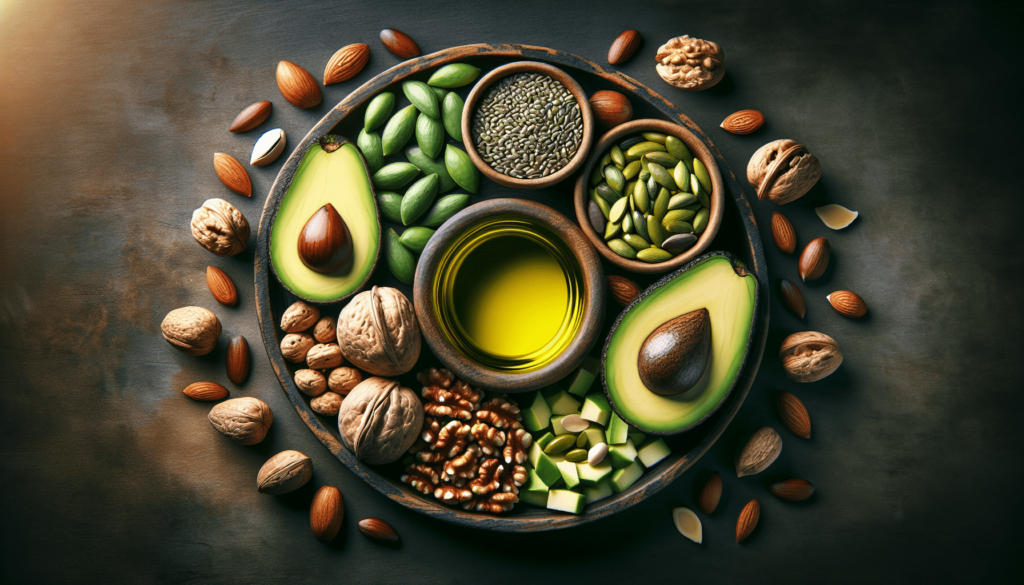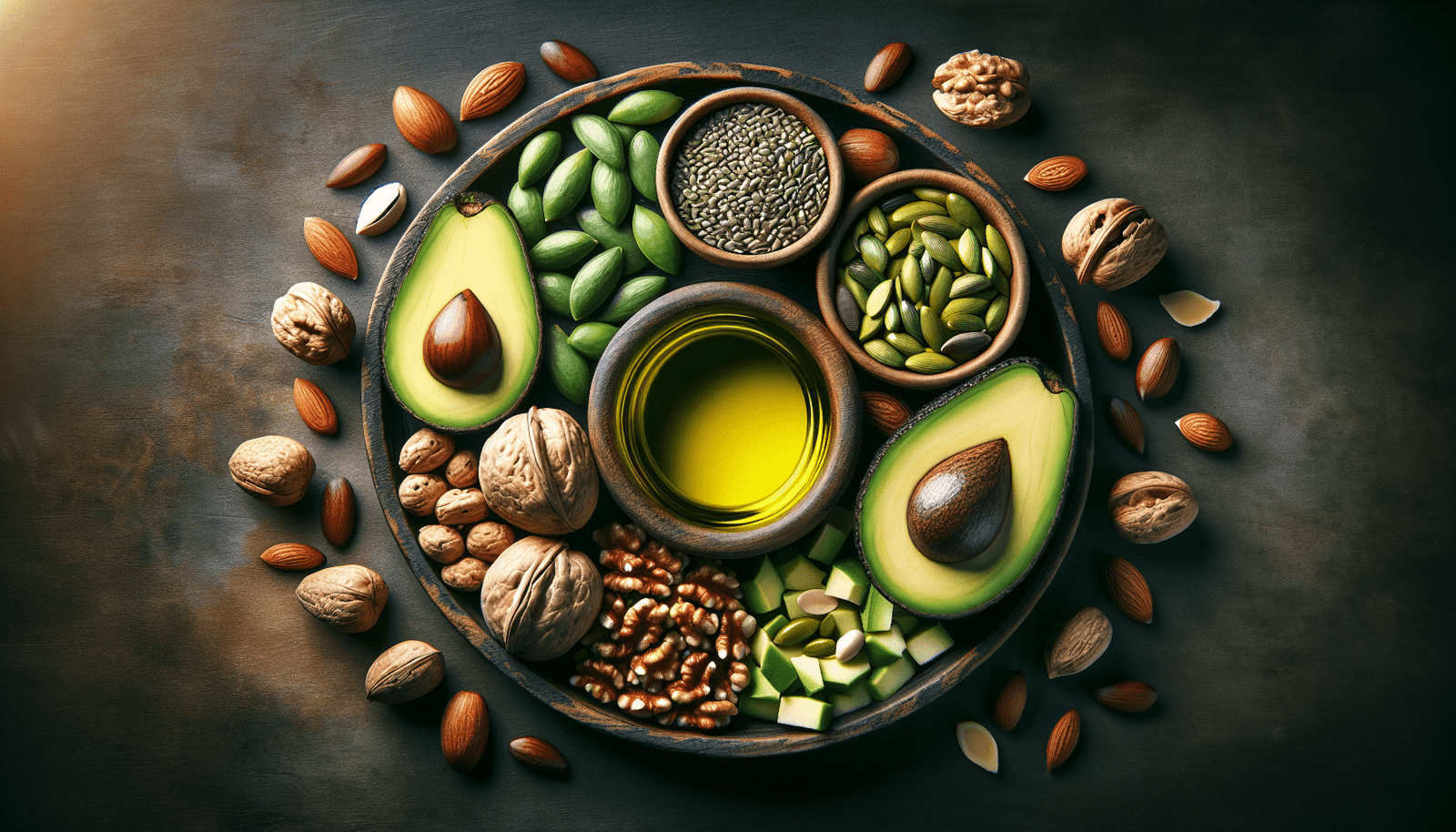Welcome to “The Comprehensive Guide to Healthy Fats!” In this article, you will learn all about the different types of healthy fats and their benefits for your overall health. From omega-3 fatty acids to monounsaturated fats, we will explore how incorporating these fats into your diet can improve your heart health, brain function, and even help with weight management. Get ready to discover the delicious and nutritious world of healthy fats! Have you ever wondered about the role that fats play in your overall health and well-being? If so, you’re not alone. Fats have been a controversial topic in the world of nutrition for many years, with some sources claiming they are harmful while others argue they are essential. In this comprehensive guide, we will delve into the world of healthy fats and provide you with all the information you need to make informed decisions about your diet and lifestyle. So, grab a pen and paper, and let’s get started on your journey to understanding healthy fats.

What Are Healthy Fats?
Healthy fats, also known as unsaturated fats, are an essential component of a balanced diet. Unlike saturated and trans fats, which are known to contribute to heart disease and other health problems, healthy fats are necessary for proper brain function, hormone production, and overall well-being. They can be found in a variety of foods, including nuts, seeds, avocados, and fatty fish.
Your body needs healthy fats to function properly
Healthy fats are a crucial part of a healthy diet; they provide energy, support cell growth, and help your body absorb vitamins. By including healthy fats in your diet, you can improve your heart health, brain function, and even aid in weight loss.
Types of Healthy Fats
There are several different types of healthy fats, each with their own unique benefits. The three main types of healthy fats are monounsaturated fats, polyunsaturated fats, and omega-3 fatty acids.
Monounsaturated Fats
Monounsaturated fats are found in foods like olive oil, avocados, and nuts. They are known for their heart-healthy properties and can help lower bad cholesterol levels while increasing good cholesterol levels in the body.
Polyunsaturated Fats
Polyunsaturated fats can be further divided into two categories: omega-3 and omega-6 fatty acids. Omega-3 fatty acids are found in fatty fish like salmon, walnuts, and flaxseeds, and are known for their anti-inflammatory properties. Omega-6 fatty acids, on the other hand, are found in oils like soybean and corn oil, and are essential for brain function and skin health.
Omega-3 Fatty Acids
Omega-3 fatty acids are a type of polyunsaturated fat that is essential for brain function, heart health, and reducing inflammation in the body. They can be found in fatty fish like salmon, walnuts, chia seeds, and flaxseeds.
Benefits of Healthy Fats
Including healthy fats in your diet has numerous benefits for your overall health and well-being. From improving heart health to boosting brain function, here are some of the benefits of consuming healthy fats:
Healthy cardiovascular system
Healthy fats can help lower LDL (bad) cholesterol levels and increase HDL (good) cholesterol levels, reducing the risk of heart disease and stroke.
Brain health
Healthy fats, especially omega-3 fatty acids, are essential for proper brain function, cognitive development, and reducing the risk of neurodegenerative diseases like Alzheimer’s.
Weight management
Contrary to popular belief, consuming healthy fats can actually aid in weight loss by helping you feel full and satisfied, reducing cravings and preventing overeating.
Skin health
Healthy fats help keep your skin hydrated and supple, reducing the appearance of wrinkles and promoting a healthy complexion.
How to Incorporate Healthy Fats Into Your Diet
Now that you understand the importance of healthy fats, you may be wondering how to incorporate them into your diet. Luckily, there are plenty of delicious and nutritious ways to add healthy fats to your meals without sacrificing taste or flavor.
Cooking oils
Switch out unhealthy cooking oils like vegetable oil or butter with healthier alternatives like olive oil or coconut oil. These oils are rich in monounsaturated fats and can add a delicious flavor to your dishes.
Avocados
Avocados are a versatile fruit that can be used in a variety of dishes, from salads to smoothies. They are rich in monounsaturated fats, fiber, and potassium, making them a nutritious addition to your diet.
Nuts and seeds
Snack on a handful of nuts or seeds like almonds, walnuts, chia seeds, or flaxseeds for a quick and easy way to add healthy fats to your diet. You can also sprinkle them on top of yogurt, oatmeal, or salads for an extra crunch.
Fatty fish
Incorporate fatty fish like salmon, mackerel, or sardines into your diet at least twice a week to increase your intake of omega-3 fatty acids. These fish are not only delicious but also rich in protein and essential nutrients.

The Truth About Saturated and Trans Fats
While healthy fats are essential for your health, it’s important to understand the negative effects of saturated and trans fats on your body. Saturated fats are found in animal products like meat and dairy, as well as processed foods like fried foods and baked goods. Trans fats, on the other hand, are artificially created fats that are found in processed foods like margarine, shortening, and snack foods.
Saturated Fats
Saturated fats have been linked to an increased risk of heart disease, stroke, and diabetes. Consuming too much saturated fat can raise LDL (bad) cholesterol levels in your blood, leading to plaque buildup in your arteries and increasing the risk of heart attacks.
Trans Fats
Trans fats are even worse than saturated fats when it comes to your health. They not only raise LDL cholesterol levels but also lower HDL (good) cholesterol levels, making them a double threat to your heart health. Trans fats have been banned in many countries due to their harmful effects on the body.
Limit your intake of saturated and trans fats
To protect your heart health and overall well-being, it’s important to limit your intake of saturated and trans fats in your diet. Opt for lean cuts of meat, low-fat dairy products, and whole foods instead of processed foods that are high in unhealthy fats.
Reading Food Labels
Reading food labels can help you make informed decisions about the foods you eat and ensure that you are getting enough healthy fats in your diet. When reading food labels, look for the following:
Total fat
Pay attention to the total fat content in the food you are consuming, as well as the breakdown of saturated, trans, monounsaturated, and polyunsaturated fats. Aim for foods that are low in saturated and trans fats and high in healthy fats.
Ingredient list
Check the ingredient list for any sources of unhealthy fats like hydrogenated oils, palm oil, or lard. Avoid foods that contain these ingredients, as they can have negative effects on your health.
% Daily Value
Look at the % Daily Value (%DV) on the food label to determine how much of each type of fat is in the food. Aim for foods that have a high %DV of healthy fats and a low %DV of saturated and trans fats.
Conclusion
In conclusion, healthy fats are an essential component of a balanced diet and are necessary for your overall health and well-being. By incorporating healthy fats into your meals, you can improve your heart health, brain function, and even aid in weight loss. Remember to limit your intake of saturated and trans fats, and always read food labels to make informed decisions about the foods you eat. So, the next time you’re grocery shopping, be sure to stock up on foods rich in healthy fats and reap the benefits of a nutritious diet. Your body will thank you for it!

